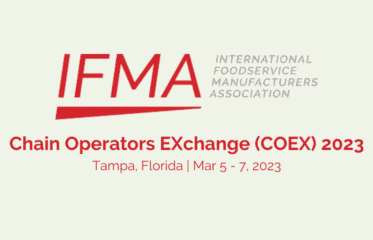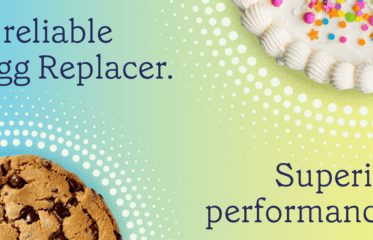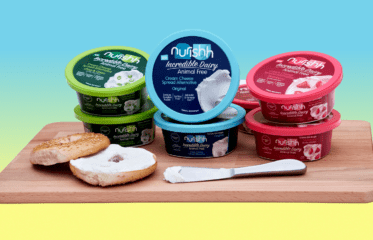A Peek at Our Partnership Model
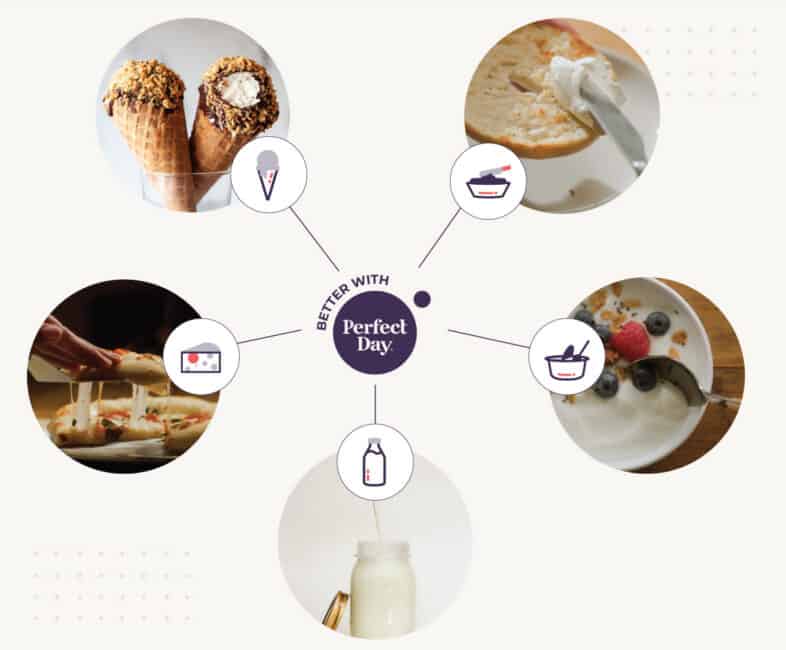
Back in 2014, the thought that we could make real dairy without using cows was just a wild idea. Today, we’ve not only made that idea a reality, but we’re also partnering with groundbreaking brands to begin building a whole new category of animal-free foods.
When we started on this journey, we were obsessed with providing the world with sustainable and humane table-ready favorites like milk, ice cream, cheese, and yogurt. But during those first years as we developed early product prototypes and learned more about the market we were planning to enter, we realized that simply making our own line of consumer packaged goods wouldn’t bring about the next-level transformation the global food supply chain really needs.
We learned that most of the world’s milk isn’t used as milk — it’s turned into other products and ingredients. Take a look next time you’re at the grocery store: you’ll find dairy ingredients in pretty much every aisle, in a wide variety of products benefiting from milk’s versatility in some way. We figured that if we could identify the magic that makes dairy, dairy, we could provide it to the food makers who create your favorite food products — and, in aggregate, could help us move the needle on transforming the industry. Considering we are on a mission to make the animal-free dairy of our dreams, we knew something was missing from fully plant-based dairy alternatives — they were missing that milky magic. So, what is this magic within dairy?
Our researchers learned that what makes dairy delicious, nutritious, and versatile comes down to a small but super-functional component of milk. The magic ingredient in our favorite dairy foods isn’t milk itself, but milk protein — specifically, whey and casein proteins. These proteins are used in all sorts of packaged goods, lending functionality, and boosting the nutritive quality of everything from salad dressings and condiments to soups and beverages to baked goods, snack foods, and more.
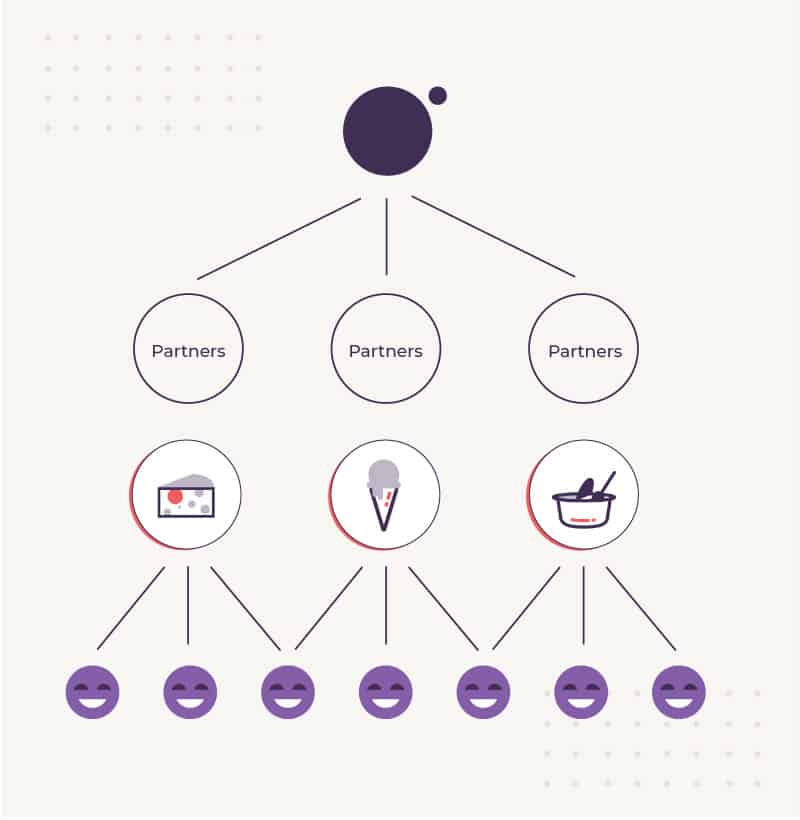
These proteins were not just familiar to the food industry, but widely regarded as the gold standard in food formulation. The prospect of an animal-free version of these proteins is huge for all food makers, big and small, in and out of dairy.
In 2017, we stopped thinking of ourselves as a new competitor among the plethora of existing dairy alternatives. Instead, we saw a future in which we could empower all sorts of food and dairy companies to offer kinder, greener products to their customers.1 A future that strengthens and protects dairy supply chains from the risks associated with catastrophic climate change.
We can’t change the world alone. Why only build a brand that competes with other brands, when we can have a greater impact by working together? Partnership is at the heart of our business-to-business (B2B) model. There are many different types of B2B partnerships to get products in front of customers. One way is working directly with food brands to bring products to directly to consumers, whether in stores or through e-commerce. Another mode of partnerships is food service. Food service typically refers to food and beverages prepared and consumed outside the home. It’s a model in which a company provides ready-to-eat food products to cafes, restaurants, sporting arenas, campus cafeterias, and more.
As you can imagine, strong partnerships (whether in retail or food service) take time to build. Read on for a glimpse at how we’re moving from “just a wild idea” to the food on your plate.
How We Work with Partners
There are several steps along the path to partnership, and selecting partners that share our vision for a kinder, greener world is often as much an art as it is a science. Ultimately, we look for companies that share our vision and want to offer their consumers a sustainable dairy option that is just as creamy, melty, and delicious as conventional dairy, without the downsides.
We receive interest every day from both new and established companies across the globe and carefully consider each inquiry for alignment with our strategy, product roadmaps, and target markets. We dive deep into what products prospective partners want to make with our ingredients, as well as how and when they hope to introduce new animal-free foods to their customers.
After we’ve done our due diligence with a potential partner and we both agree to proceed with a partnership, each company’s product teams connect with one another. This is when product development really kicks off. We give the partner a starter kit — baseline information about how to use our animal-free ingredients, recipes and applications we’ve proven in the Perfect Day test kitchen, and enough protein to start testing out their own formulations. We offer as much support as our partners want from us, and we love to share what we’ve learned through our own trial, error, and iteration.
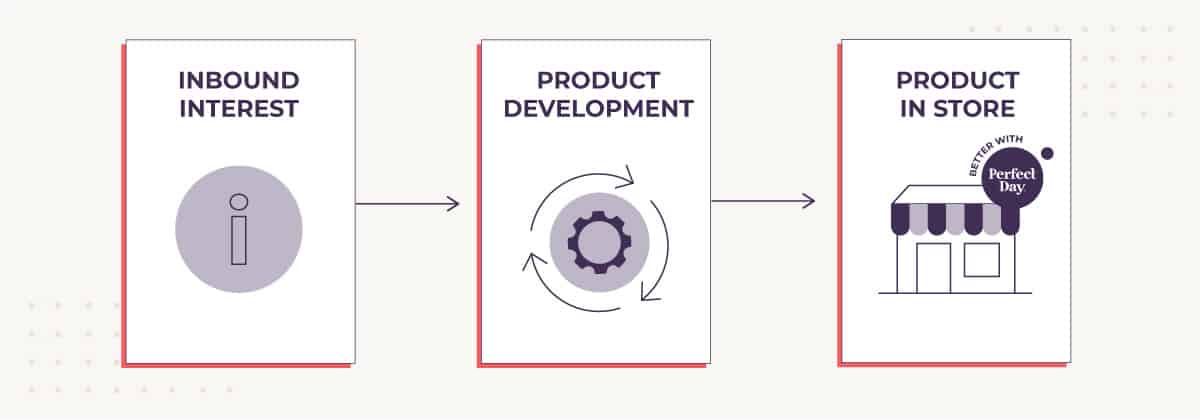
Simultaneously, we talk with the partner’s business and marketing teams about things like packaging and positioning. Positioning means defining the messages a product should communicate to help consumers make informed purchasing decisions. For example, we want to help our partners signal to their customers that these products are animal-free and lactose-free, but still contain a milk allergen.
We also want Perfect Day to be included on packaging. We’re proud of our partnerships and want shoppers to know when we’re working with their favorite brands. To do this, we ask our partners to put our “Better With Perfect Day” mark on packaging along with their own logo. You’ve probably noticed this kind of ingredient cobranding: a Splenda logo on a can of Diet Coke, for example. Ingredient cobranding is also common in tech and apparel: “Intel Inside” appears on computers that use Intel processors,2 and the GORE-TEX brand shows up on activewear designed to withstand all types of weather.3
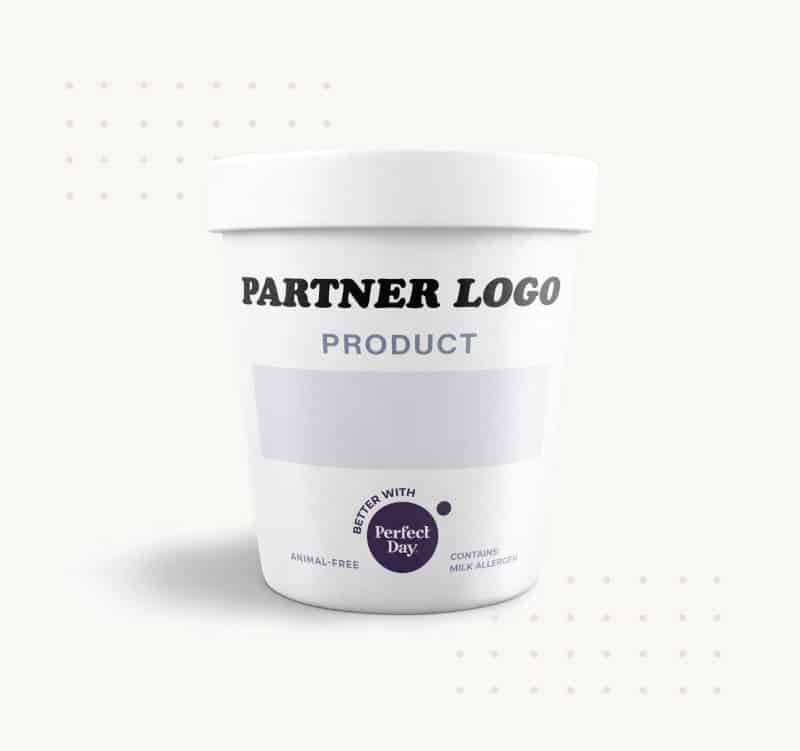
Launching any new food product takes a lot of research, planning, iteration, and oversight for safety and quality. There’s a whole ecosystem of decision makers at work behind every single product in your pantry. In cobranding partnerships, these ecosystems are even more complex and overlapping.
Each partnership is unique in terms of levels of support and collaboration. The time it takes for products to hit the market can vary. We recognize that what seems fast behind-the-scenes in the consumer-packaged-goods world can feel slow to shoppers who are eager to try new, delicious animal-free foods. We try to move as quickly with our partners as possible, but we also want to set every partner and their direct customers up for success before a product is launched.
It’s important not to rush products to market before they’re ready, especially when launching something that’s so brand-new. Our animal-free dairy ingredients introduce a whole new category to the world: neither plant-based, nor animal-derived. Perfect Day and companies developing other animal-free innovations must create our new categories with care and thorough planning. This approach ensures that we will make a lasting impact together.
Forging the Future Together
To address big challenges, like climate change, we have to think big. Thinking big has way more impact when we put our heads together. That’s why partnering with food and dairy companies is the key to bringing kinder, greener options to the world. We provide the groundbreaking-yet-familiar ingredients — they’re functionally the same milk proteins already used today — while partners provide the culinary know-how to bring products to market.
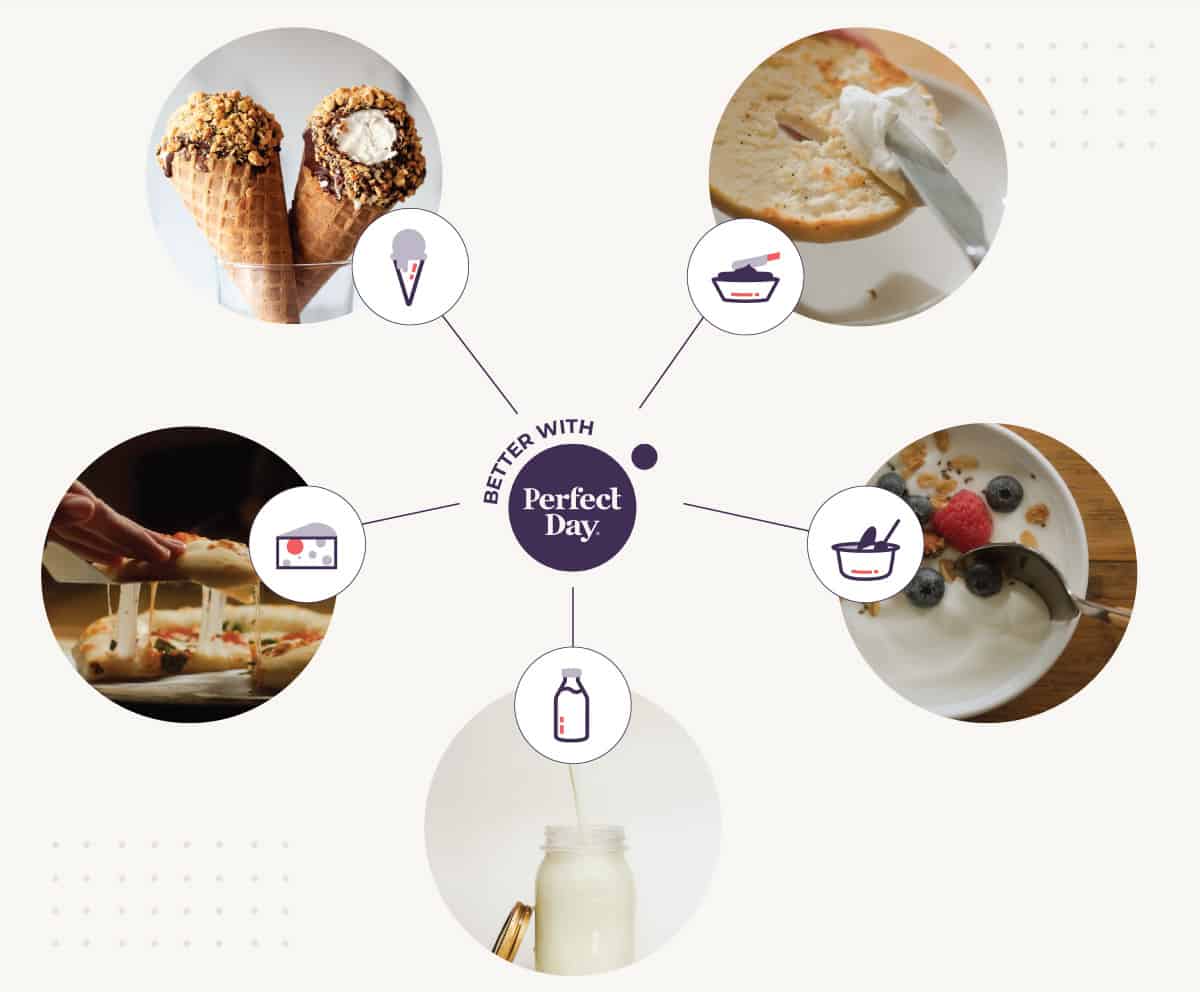
Our first commercial partners were makers of sumptuous, premium ice cream. Now, we’re beginning to expand our retail and food service partnerships to offer gelato, cream cheese, cake mix, and sports nutrition products, with even more categories still to come. With each new, diversified partner, we’ll transform every aisle of the grocery store. Together we’ll make high quality, sustainable foods available to more people than ever before.
Our goal is to bring our animal-free dairy ingredients to both new brands, and to the brands you already know and trust. And they’ll make the kinds of products you already love. Only better. With Perfect Day.
- Pandya, Ryan. (2017, November 30). The future of dairy. LinkedIn. https://www.linkedin.com/pulse/future-dairy-ryan-pandya/
- Intel. (n.d.). Ingredient branding — End user marketing and “Intel Inside.” https://www.intel.com/content/www/us/en/history/virtual-vault/articles/end-user-marketing-intel-inside.html3.Tradii, Joe. (2018, February 28). The changing playing field of ingredient branding. Brand Quarterly. https://3885b461-75c1-4323-baba-32bdc5df59f3.filesusr.com/ugd/816f2d_8b2022b8cb44410793f9b70388675f83.pdf
We’d love to hear your thoughts!
Your email address will not be shared.
